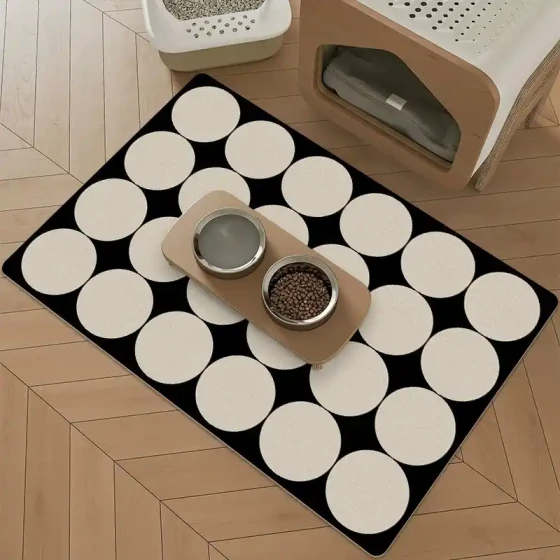Is a cat stiff really dead_The truth that cat stiffness does not equal death
When a cat's body becomes stiff, it is truly a painful and worrying moment for all cat owners. Many instinctively believe that a cat's body stiffness means it has completely left us. But is this really the case? Simply put, although body stiffness (usually rigor mortis) is a common sign of death, it alone cannot immediately determine that the cat is "truly dead." In some cases, a cat’s body can become stiff or unresponsive for other reasons, which requires careful observation and judgment.

When a cat's body becomes stiff, what we often first think of is the term "rigor mortis." Rigor mortis, as the name implies, is a physical change in the muscles of an animal's body after death, causing the body to become stiff. It is a complex biochemical process.
What is rigor mortis?
Rigor mortis is the phenomenon of muscle contraction and stiffness after death. While we are alive, muscle contraction and relaxation require energy molecules—adenosine triphosphate (ATP). ATP acts like the "fuel" for muscle activity. After death, the body stops producing ATP. However, the calcium ions needed for muscle contraction remain in muscle cells. Without enough ATP, muscle cells cannot pump out calcium ions nor cause the myosin heads to detach from actin, leading to continuous muscle contraction and a stiff state.
The onset and fading of rigor mortis is a gradual process. It usually does not appear immediately after death. Depending on factors such as the animal's body size, the environmental temperature at death, and cause of death, the timing for rigor mortis onset, duration, and fading can vary.
Timing of rigor mortis onset and fading
Generally, rigor mortis in cats may appear from a few minutes to several hours after death. In warmer environments, rigor mortis may develop faster. It typically starts in the muscles of the face, neck, and jaw, then gradually spreads throughout the body.
After reaching maximum stiffness, rigor mortis persists for a period before gradually fading as muscle tissue begins to break down. The fading of rigor mortis can take 1 to 2 days or even longer, eventually causing the cat's body to become soft again.
So, if you find a cat's body stiff, it very likely means it has passed away and the rigor mortis process has started. But this is only one sign of death, especially when rigor mortis has not spread to the whole body or just started to fade, relying solely on stiffness to judge if the cat is “fully dead” may be inaccurate.
Are there other reasons besides death for a cat’s body stiffness?
Although rigor mortis is a strong indicator of death, sometimes a cat’s body may become stiff or unresponsive without actual death. Understanding these possibilities helps us make a more comprehensive judgment.
- Extreme hypothermia (low body temperature): If a cat is exposed to a cold environment for a long time, its body temperature will drop rapidly. Severe hypothermia can cause the cat to become very weak, with faint breathing and heartbeat, even disorientation and body stiffness, appearing to have lost vital signs. In this case, the cat may be in a state similar to "apparent death," but with timely warming and medical care, there is still hope for recovery. When warming a cat, do it slowly to avoid sudden temperature rises.
- Severe shock or coma: Shock or deep coma caused by trauma, poisoning, or serious illness may cause the cat to be sluggish or completely unresponsive, with abnormal muscle tone and possibly some stiffness. This is an extremely critical condition requiring emergency veterinary intervention.
- Certain neurological or muscle diseases: Although rare, some neurological disorders or intrinsic muscle conditions may cause cats to exhibit paroxysmal or persistent muscle stiffness and spasms, easily mistaken for death-related stiffness.
- Drug effects: Certain medications, especially anesthetics or sedatives, may cause the cat’s body to relax or show other atypical states before waking up, requiring careful observation to differentiate.
It should be emphasized that the above conditions are relatively rare and usually accompanied by other obvious clinical symptoms. In most cases where a cat’s body is stiff, rigor mortis remains the primary cause, indicating a very high likelihood of death.
How to more accurately determine if a cat has passed away?
Relying solely on body stiffness to judge if a cat is "truly dead" is not rigorous enough. We need to combine other key vital signs to make a more accurate judgment:
- Check breathing: Observe whether the cat’s chest rises and falls, or place a small mirror or tissue in front of the cat’s nostrils to see if there is fogging or airflow. Prolonged absence of breathing is a strong indicator of death.
- Check heartbeat: Gently place your ear or finger behind the cat’s left elbow near the chest to feel if there is a heartbeat. Cats usually have a fast heartbeat; if you cannot feel or hear any heartbeat, death is very likely.
- Check pupil response: Gently lift the cat’s eyelids to observe pupil size. Shine a flashlight (or phone light) on the pupils; healthy cats’ pupils constrict quickly. After death, pupils usually dilate and do not respond to light.
- Check body temperature: Normal cat body temperature is about 38-39°C. After death, heat production stops, and body temperature gradually decreases until cold, equalizing with the surrounding environment. Temperature decline is a sign of death, but low body temperature can also be caused by hypothermia.
- Mucous membrane color: Healthy cats' gums and tongue usually are pink. After death, blood circulation stops, and mucous membranes become pale or purple.
- Degree and duration of stiffness: Considering the earlier mentioned rigor mortis onset and fading process, if a cat’s body remains stiff for more than a day or stiffness starts to fade, this is usually the normal progression of postmortem rigor mortis.
It is important to comprehensively evaluate all these signs and possibly observe over a period, rather than draw conclusions based on one or two signs immediately. In uncertain situations, contacting a veterinarian for a professional judgment as soon as possible is the safest approach.
What should you do when you find your cat stiff or unresponsive?
When you find your cat’s body stiff, unresponsive, or exhibiting other abnormalities, staying calm and taking immediate action is crucial:
- Do not panic: Although it is heartbreaking, you need to remain as calm as possible to conduct necessary observations and handling.
- Move carefully: If the cat’s body is already stiff, move it gently to avoid unnecessary injury.
- Check vital signs: Follow the previously mentioned methods to carefully check the cat’s breathing, heartbeat, pupil response, and body temperature. Recheck several times to confirm the results.
- Keep warm (if hypothermia is suspected): If the cat was brought back from a cold environment and is cold and stiff, you can wrap it in a blanket to slowly warm it while checking vital signs, but still seek medical care promptly. Important: Unless hypothermia is confirmed, do not attempt to heat the cat, especially if it is already dead, as warming accelerates body decomposition.
- Immediately contact a veterinarian: Regardless of your judgment, contact your vet promptly and describe the situation. The vet will provide professional advice or guide you to bring your cat to the clinic for confirmation. Even if death is confirmed, the vet can offer subsequent help and guidance.
Frequently Asked Questions
- Q: If a cat’s body is stiff, does it mean it has been dead for a long time?
A: Not necessarily. Body stiffness is a manifestation of rigor mortis, which generally begins within minutes to hours after death and fades after some time. So the degree and duration of stiffness can provide some clues, but the specific time of death requires other factors and professional judgment. - Q: What is the difference between stiffness from hypothermia and rigor mortis?
A: Stiffness from hypothermia is caused by muscle dysfunction at low temperatures, usually accompanied by faint vital signs (even if very difficult to detect). Rigor mortis is a chemical change in muscles after death, at which point the cat has no vital signs. The key to distinguishing is whether faint breathing and heartbeat can be detected and if the body temperature is extremely low. - Q: How should I handle the body of a deceased cat?
A: After confirming the cat has passed away, you can wrap the body gently in a soft blanket or cloth. Then you may contact pet funeral services for cremation or choose other suitable methods. Many veterinary clinics also offer related consultation and support.
Conclusion
Cat body stiffness is a heartbreaking sign and, in most cases, is indeed a manifestation of death (rigor mortis). However, we cannot rely on this alone as the only criterion. Rare cases like severe hypothermia, shock, or deep coma can also cause stiffness or unresponsiveness. As responsible pet owners, encountering such situations we should stay calm, carefully observe multiple vital signs such as breathing, heartbeat, pupil response, and temperature, and seek professional veterinary assistance immediately if uncertain. Veterinarians can provide accurate diagnosis and follow-up support and guidance. May every fur baby live peacefully in love throughout their life.
References
- Veterinary literature and popular science materials related to feline rigor mortis (Rigor Mortis).
- Information on symptoms and first aid for feline hypothermia.
- Veterinary knowledge related to signs of animal death.
- Veterinary emergency guidelines on management of animal shock and coma.



